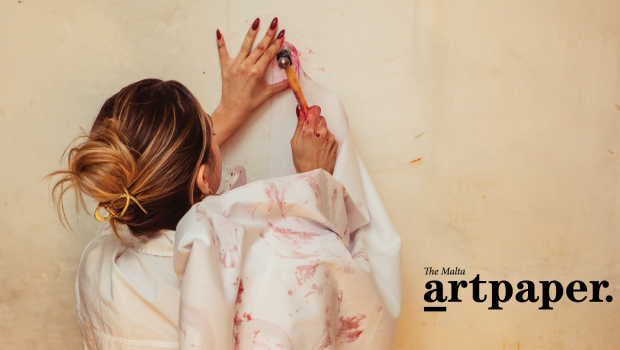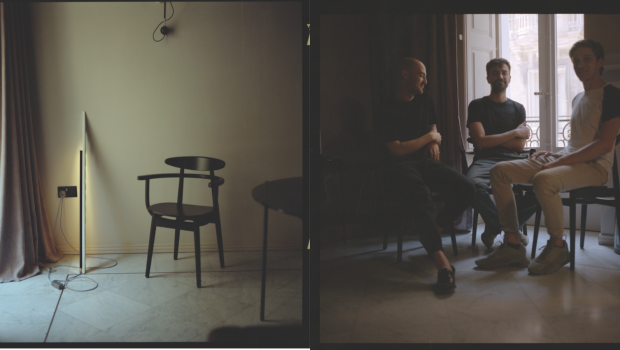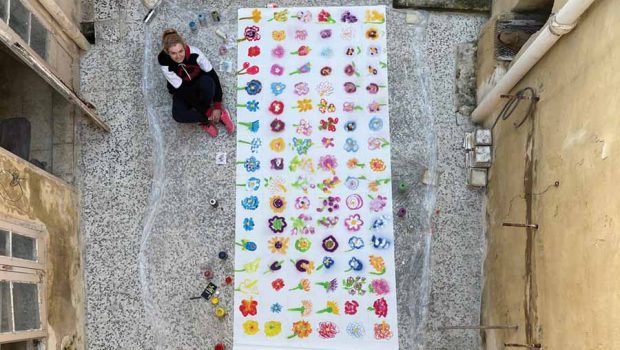Two Men in a Boat
As I was growing up, a young boy on an island colony during the Cold War, I was aware of a strange enemy, greater than the USSR and just as invisible, that was all around us. As I was growing up, a young boy on an island colony during the Cold War, I was aware of a strange enemy, greater than the USSR and just as invisible, that was all around us.
Difficult to define, it had something to do with the lack of information about things, a weakness stemming from an uncertain future and the fear of being alone and independent. I guess you could call this enemy the Unknown. It lingered darkly in the shadows, ubiquitous and inaccessible, getting mixed up, sadly, with ominous operations on the battlefield of my conscience, where good and evil were in perpetual confrontation. The unknown didn’t concede complacency. It needed, with enormous effort and action, to be defeated, in order to dispel the malevolent mists of ignorance and superstition.

That battle found its symbols in the stories that fed my fantasy during early adolescence, tales, mostly, of exploration into uncharted territories. One of my favourite books, I remember, was called The Silent Places by Stewart Edward White. It was redolent with the idealism of the trail scout, which I avidly absorbed, and full of a fascination for the great, white, quiet forests – the Silent Places –beautifully painted with words that drew me in, straight from the first paragraph.
“At about eight o’clock one evening of the early summer a group of men were seated on a grass-plot overlooking a broad river. The sun was just setting through the forest fringe directly behind them. Of this group some reclined in the short grass, others lay flat on the bank’s slope, while still others leaned against the carriages of two highly ornamented field-guns, whose embossed muzzles gaped silently at an eastern shore nearly two miles distant. The men were busy with soft-voiced talk, punctuating their remarks with low laughter of a singularly infectious character. It was strange speech, richly embroidered with the musical names of places, with unfamiliar names of beasts, and with unintelligible names of things”.
The text was accompanied by colourful illustrations that bridged the eager space between those bright words and the imagination of the reader. They were painted by Philip R. Goodwin who became well known for his so-called ‘predicament picture’: the struggle between man and beast and the trials of life in the untamed natural landscapes of the northern forests and lakes. In his illustrations he often depicted his heroes from behind as they faced the treacherous wild, putting the animal and the protagonist, whether Mountie or lumberjack, right up against the picture plane. Whether it was a grizzly bear and a scout meeting each other on a trail, or two mates on a duck-hunting expedition, rowing through the rushes in a little Indian canoe, Goodwin’s signature style was his impressionistic depiction of the wonder of the American scenery, the woods, the plains and the waters of the Great Lakes and the border provinces of Canada and the States.
The book had a lasting impression on me. Recently, in an antique shop, a painting caught my attention that, in hindsight, must have reminded me somehow of the northern American landscapes described in the book. I was in search of more useful stuff, chairs and mirrors and the like, but the subject of the painting – two men in a boat – must have caused a long-buried memory to resurface. It was a charming oil painting, naive in a way that suited the subject well.
I looked at it closely, catching the scent of the fine day that had inspired its creation almost a hundred years ago. For a moment I was there, the still air, the lilac haze in the distance tracing the line of the opposite shores and the lush sweep of grass in the foreground embracing the boat and its silent, watchful occupants. There was silence all around except for the soft, rustling splashes of a duck, filtering its bill along the surface of the water. The two men are waiting intently to catch louder splashes, a sign of the duck running on the water and about to take flight. The sound, then,
of the ensuing thumps and swishes of the duck’s wings in the mild air, woke me from my reverie and I was back in the cluttered curiosity shop.

The painting was dated 1933 and, strangely, in spite of the foreign landscape it portrayed, was signed by a Maltese artist called Micallef. Seeing my hesitation, the antique dealer egged me on, declaring that the picture came from a ‘good’ house. ‘It’s cute’, I thought, characteristically letting the capricious side of me take over. I decided to purchase it.
As I was writing out the cheque, however, my curiosity got the better of me and I spontaneously asked about its provenance. “I got it from Villa Francia,” the dealer proudly announced. “After the auction was concluded and the best items were gone, I bought the rest”.
I pricked up my ears. Villa Francia was the residence of Sir Ugo Mifsud, Malta’s third Prime Minister who had succeeded my grandfather as Head of the Ministry during the first years of Self-Government. I remembered my mother repeatedly mentioning how Ugo Mifsud was married to the daughter of Francia, a miller and one of the richest men on the island, and how my grandfather, was no match for his wealthy political rival. I had a vague idea of what Sir Ugo Mifsud looked like, his moustache and projecting ears, and it suddenly struck me that the man in the boat with the gun on his lap and the cigarette hanging casually from his lips, patiently waiting for a flapping, hissing, soaring duck to emerge from the rushes, was the ex-Prime Minister himself. Were it not for a remembered family myth, and my curiosity of the moment, what could have remained forever a pleasant, but anonymous, painting of an ordinary hunting day out on the marshes, suddenly acquired historical relevance. I was thrilled.
There was a mystery still to be unravelled though. Where was that grass-slope or riverbank that served as a backdrop to Sir Ugo Mifsud’s duck-hunting expedition? That evening, a cursory surf on the internet painlessly provided the coveted answer. In 1928, after having lost the general election, Sir Ugo Mifsud attended, as Head of the Opposition, the Empire Parliamentary Conference that was convened in Canada where he made the case for the first official Maltese ‘settlers’, as he called them, in Canada. Dr Ugo Mifsud Bonnici, President Emeritus, has patiently transcribed and published on the net, a small number of letters that Sir Ugo Mifsud sent to his father, Dr Carmelo Mifsud Bonnici, who was Minister of the Treasury in Sir Ugo Mifsud’s Cabinet. The letters, in his handwriting and jotted down mostly on hotel stationery, trace his journey from Calgary to Winnipeg and eventually to Sault Ste. Marie and Port William and Port Arthur, Lake Heads of Ontario. His participation was amply recorded in the Mid-Day News of the moment, but no mention of course was made of a day that he must have taken off from his official duties to enjoy hunting for duck on the shores of the Great Lakes – a beautiful day that was memorable enough for him to commission a painting some years later based, no doubt, on a photograph he brought back with him.

Sir Ugo Mifsud was thirty-five when he became Prime Minister in 1924, the youngest Prime Minister in the British Empire. He was the son of a judge, an able lawyer and married to a very rich lady. I remember stories being told during my childhood of my grandfather’s struggle to keep his party, the largest at the time, alive, how the small fish that eventually became the Nationalist Party, swallowed the big fish. Today, as I study an old photo of the members of Malta’s first Legislative Assembly in 1921, I cannot help but compare the two men – my grandfather in the centre, with his sweetly tilted head, his grand moustache and Gladstone collar still reminiscent of the previous century, and Sir Ugo Mifsud in the front, sitting back, relaxed, his armed folded and legs crossed at the ankles, a confident, debonair expression on his face and an attitude of someone living the present to the full, but looking eagerly to the future.
In those first years of self-government, what were they but two earnest men in a small boat called Malta that was just about leaving the safe harbour of the British Empire? They took it in turns to skipper the boat, sailing it safely out into unknown territory and steering it across troubled waters towards independence and that beautiful, ‘silent place’ we call the Future.








